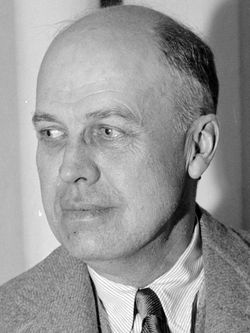
Edward Hopper (July 22, 1882 – May 15, 1967) was an American realist painter and printmaker. He is one of America's most renowned artists and known for his skill in capturing American life and landscapes through his art.
Born in Nyack, New York, to a middle-class family, Hopper's early exposure to art was nurtured by his parents. He studied at the New York School of Art under William Merritt Chase and Robert Henri, where he developed his signature style, characterized by its emphasis on solitude, light, and shadow.
Hopper's work, spanning oil paintings, watercolors, and etchings, predominantly explores themes of loneliness and isolation within American urban and rural settings. His most famous painting, Nighthawks (1942), epitomizes his interest in the quiet, introspective moments of everyday life. Despite a slow start, Hopper achieved significant recognition by the 1920s, with his work becoming a staple in major American museums. Hopper's technique, marked by a composition of form and use of light to evoke mood, has been influential in the art world and popular culture. His paintings, often set in the architectural landscapes of New York or the serene environments of New England, convey a sense of narrative depth and emotional resonance, making him a pivotal figure in American Realism. Hopper created subdued drama out of commonplace subjects layered with a poetic meaning, inviting narrative interpretations. He was praised for "complete verity" in the America he portrayed.
In 1924, Hopper married Josephine Nivison, also an artist, who played a crucial role in managing his career and served as the model for many of his figures. The couple lived a modest life in New York City, with summers spent in Cape Cod, which influenced much of Hopper's later work. Despite his success, Hopper remained a private and introspective individual, dedicated to exploring the subtleties of human experience and the American landscape. His depiction of the American scene, with its emphasis on isolation and contemplation, remains a defining aspect of his appeal and significance in the history of American art.
Source : Wikipedia